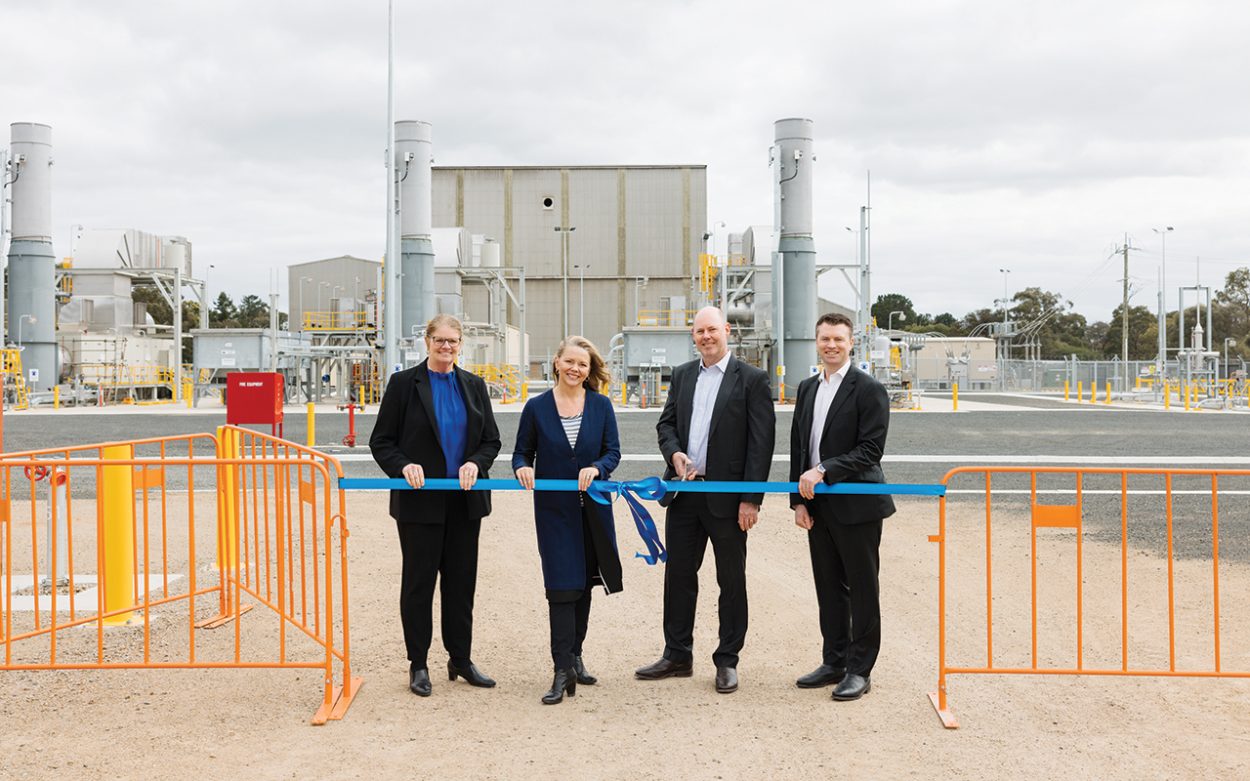A NEW ethane-generated power facility has officially launched at the existing Long Island Point (LIP) plant in Hastings – the first of its kind in Australia. ExxonMobil Australia (formerly Esso Australia) and Woodside Energy announced the $200 million Hastings Generation Project, saying it marked a milestone in the continuation of a reliable supply of natural gas to Victoria.
The new facility uses ethane – a byproduct of natural gas processed at LIP – creating enough energy to power half the households on the Mornington Peninsula. Three Solar Titan 130 gas-fired turbine generators on-site will use ethane to bring power to the grid, producing 50 per cent less carbon dioxide emissions than coal generation in the state.
Prior to this project, LIP had no outlet for ethane when their customers could not accept it. This required the burning-off – or flaring – of the ethane, which was visible across Hastings. According to Exxon, “when the customer is unable to accept the ethane as a result of planned or unplanned maintenance, in most cases, we either need to reduce the gas liquids flowing to Long Island Point, reducing the supply of propane and butane to Victoria, or need to flare the ethane”. “In some circumstances, this could even result in the need to significantly curtail natural gas supply to reduce the production of these gas liquids, which would impact the ability of Victorians to heat our homes and power our businesses”.
To celebrate the opening of the new facility, a ribbon-cutting ceremony held on 8 November was attended by production manager Geoff Humphreys and Long Island Point Plant manager Andrew Cooke, alongside Flinders MP Zoe McKenzie, executive vice-president of Woodside Liz Westcott, and ExxonMobil Australia representatives.
Cooke acknowledged that flaring “can have an impact on the community” and “that is why the Hastings Generation Project is so important; prior to this project, we had no outlet for ethane when our customer could not accept it”. “We can now reduce the amount of flaring that is needed here at LIP, by ensuring we utilise and consume as much ethane as possible in these modern efficient generators,” he said. “Further to this, the project has provided employment opportunities throughout the construction and development phase, as well as opportunities for the ongoing operation of the facility.”
Humphreys said it was a significant investment, noting gas would continue to play a significant role in power generation to support energy transition. “We have been able to step up to meet Australia’s energy needs over the years because we have continued to invest in bringing new gas supplies online,” he said. “When the wind isn’t blowing enough to turn wind turbines or the sun isn’t shining to fuel solar panels, gas ensures resilience and stability of the grid,” he said. “In addition to maintaining a firming role in the electricity market, natural gas is one of the cleanest sources of electricity generation and is key for industries such as glass, bricks, steel, fertiliser, recycling and critical minerals, that don’t have alternative energy or feedstock sources.”
McKenzie said the LIP plant contributed immensely to the community, employing more than 150 team members, and “supporting a raft of community organisations through grants and partnerships”. “Esso Australia’s investment will ensure the reliable supply of natural gas to Victoria households, at a time when under the Federal Labor Government, the price of gas has gone up 33.8 per cent.” The LIP plant has operated since 1970, providing 70 per cent of southeastern domestic gas supply.
First published in the Mornington News – 19 November 2024




